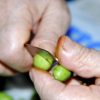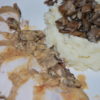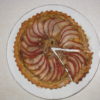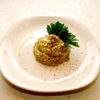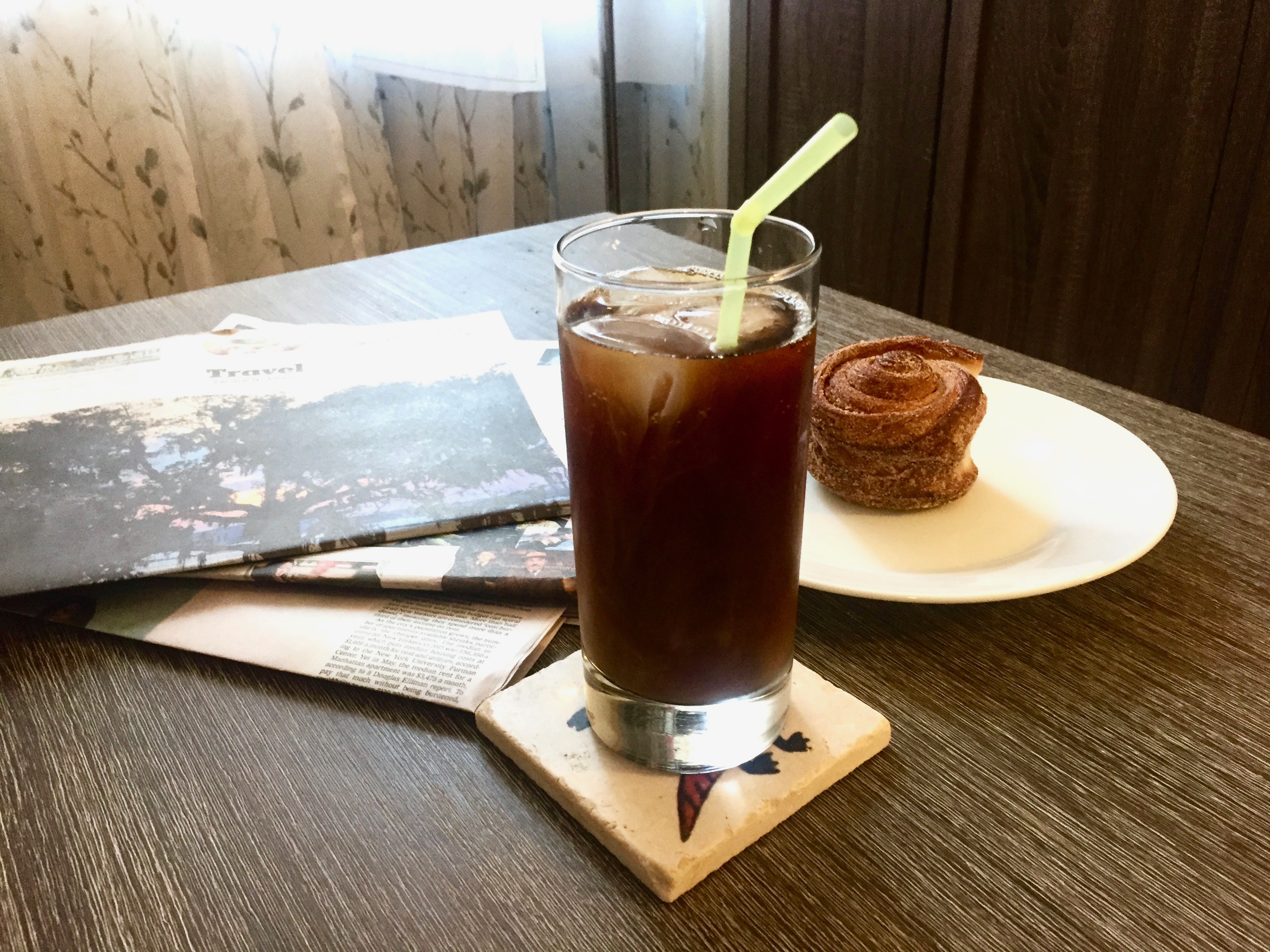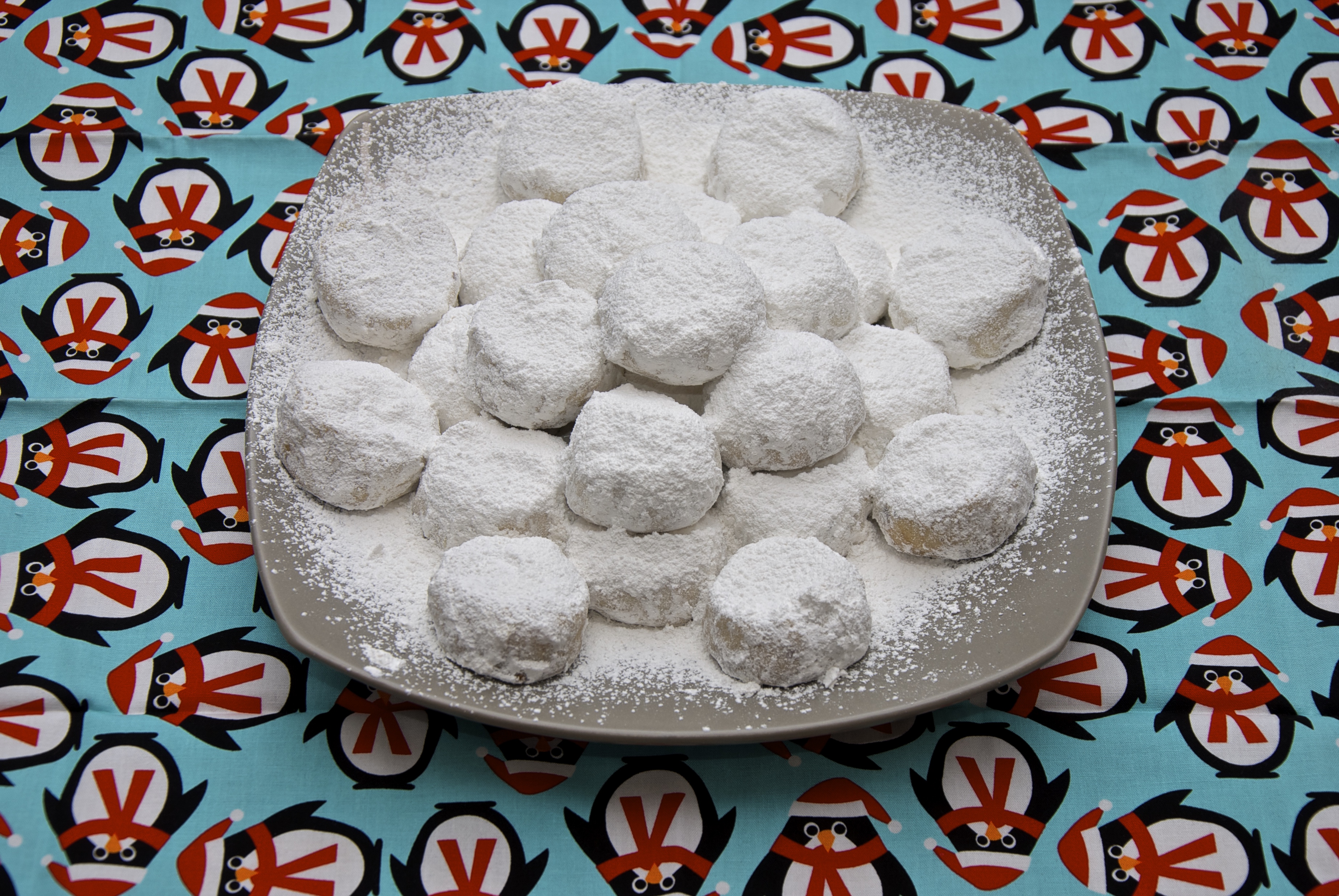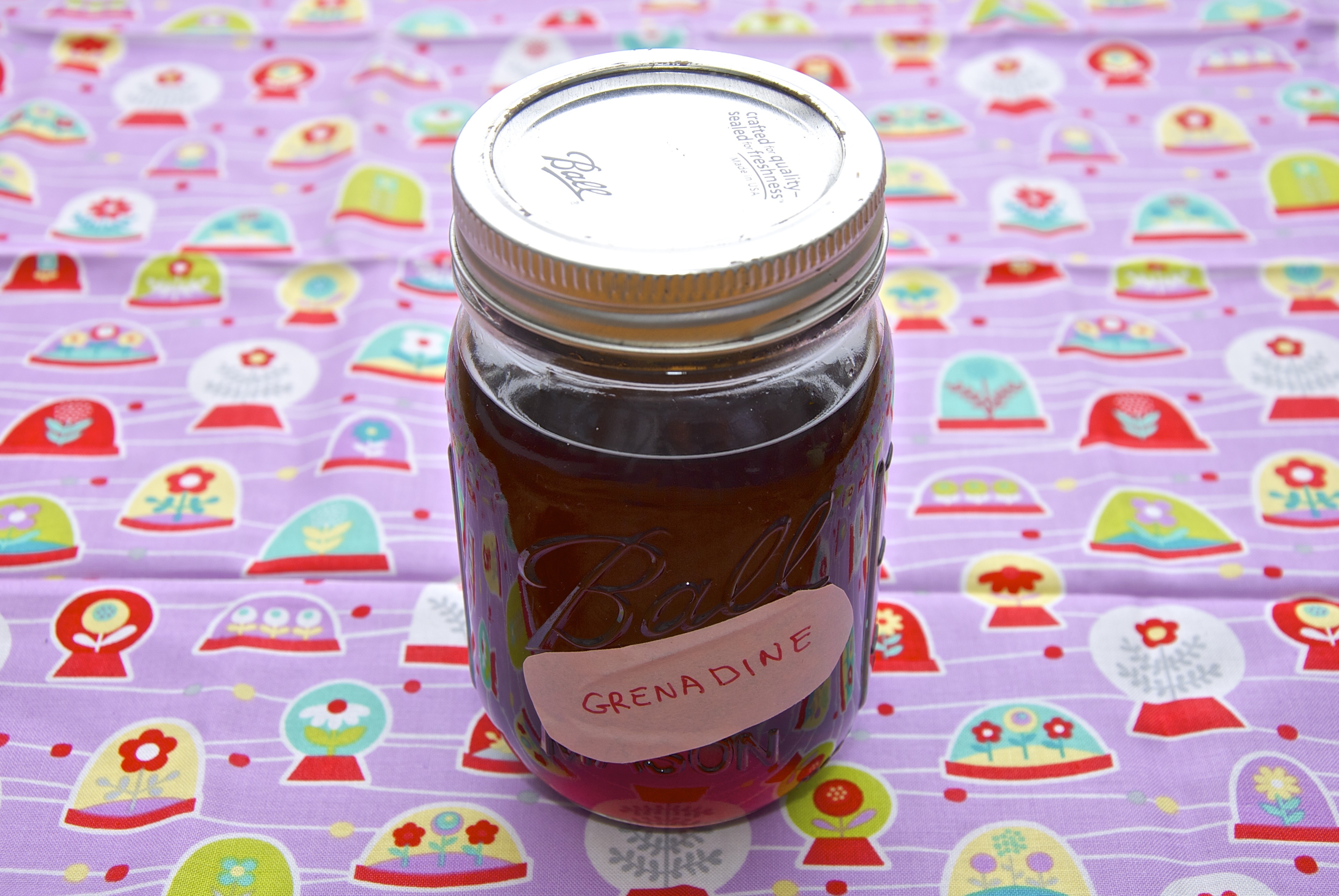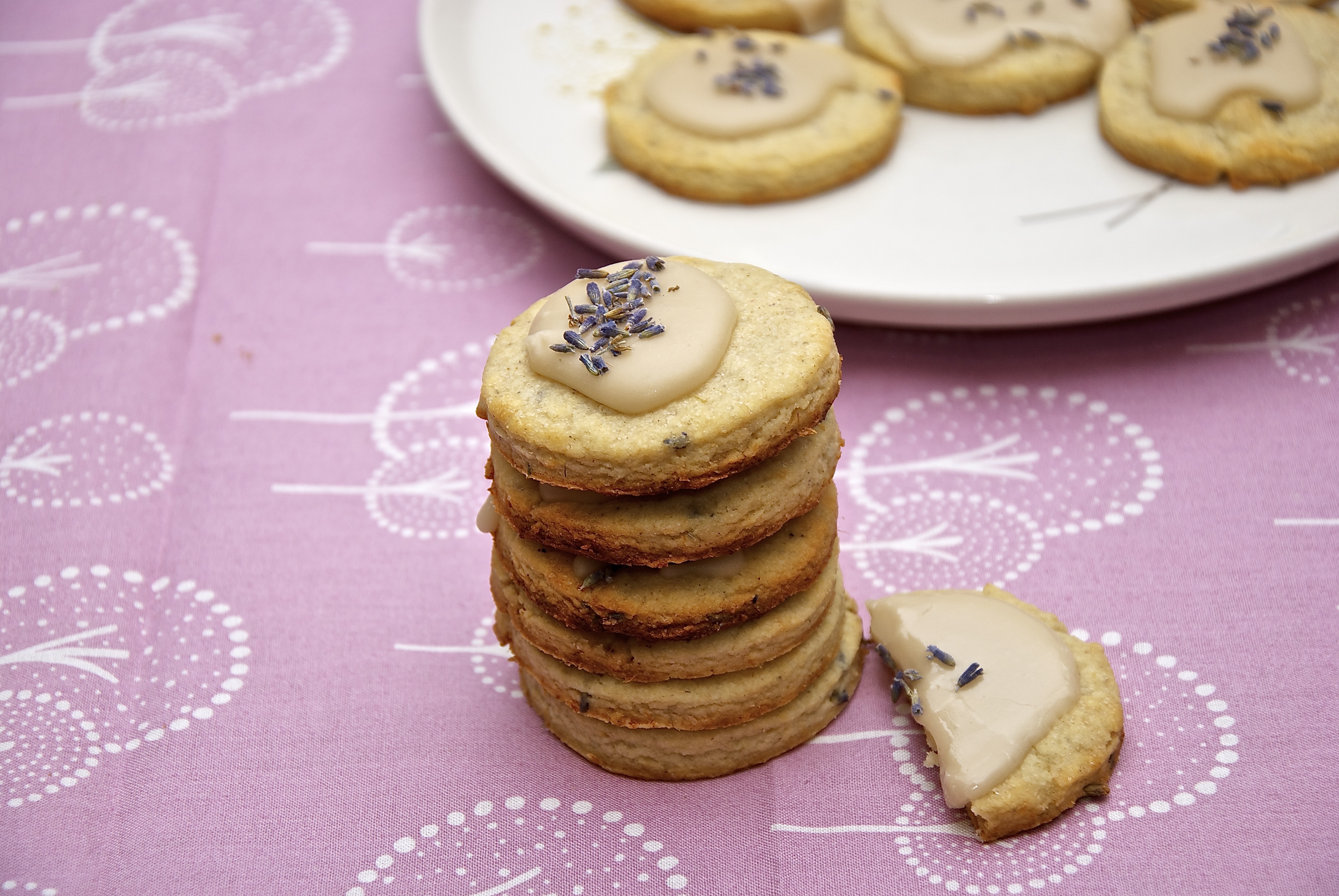
In this blog, I don’t usually make desserts. But when we do, they are amazing. Today I chose to make a simple cookie with a big character. Cookies are not just a baked good that we eat. Making cookies is just a part of the process that makes a house a home. The moment the air is filled with the amazing aroma of the baked goods that are based on butter herbs and spices it becomes so much more homey, familiar and inviting. In this attempt, I am making a somewhat odd, but a familiar combination. I am inspired from the spring that finally decided to dawn upon us after a long and cold winter. I blend the aroma of spring herbs like rosemary, lavender, and lemon to a cookie that has a fine texture and crumbly appearance.
Dunkability: The ability of a food item to be partially submerged in a liquid contained in a regular sized mug, and be retrieved after short time without any noticeable alterations to their shape neither any partial disintegration, while being able to absorb a significant amount of the surrounding liquid.
Cookies are the most amazing of all desserts. They allow a huge number of combinations, flavors and shapes, and textures. Their most unique characteristic is, however, the size. They are small enough to give them portability and dunkability (it is a real word that I just made up). We cannot trace the concept of cookie to a certain recipe in the past. Pretty much any nation that had access to flour from grains had the ability to make cookies. The name itself originated from the Dutch word koekje or (informal) koekie which means little cake, and arrived in American English through the Dutch in North America, like so many other amazing culinary inventions. However, nowadays a large number of desserts share that term. We cannot really define therefore the cookies in this way (as a small cake). Not even on any other characteristic as currently, cookies come in any size from tiny to huge, any texture from soft to super hard, and any flavor, from plain to a gazillion fillings and in any color. So as long you thing something is a cookie it is probably a cookie.
One very basic characteristic that all cookies have, or at least 99% of all cookies have, is the creaming method that is the basis of all cookie construction. It is the process where the sugar is beaten together with the butter until the butter lightens in color and resembles cream, hence the creaming method name. The beating of sugar and butter will eventually create small air pockets into the mixture. When the cookies get into the oven the air will expand creating a discontinuous structure in the cookie that is responsible for the amazing crumbling that the cookies offer. Most cookies one way or the other follow that method. Even cookies that are more on the chewy side still made this way. After that, it is the rest of the ingredients that make the difference in the texture. Enough with the talk let’s cook!
The cookies I am making are based on the shortbread cookies, so it is just butter, cream, and flour. Then we lay over the basic flavorings. Although technically you can base these cookies on any other cookie recipe, I find that this is the best since I like the buttery undertones, the crumbly texture and the very neutral flavor will leave enough room to highlight the lavender and the lemon. So we that in mind let’s get cooking!
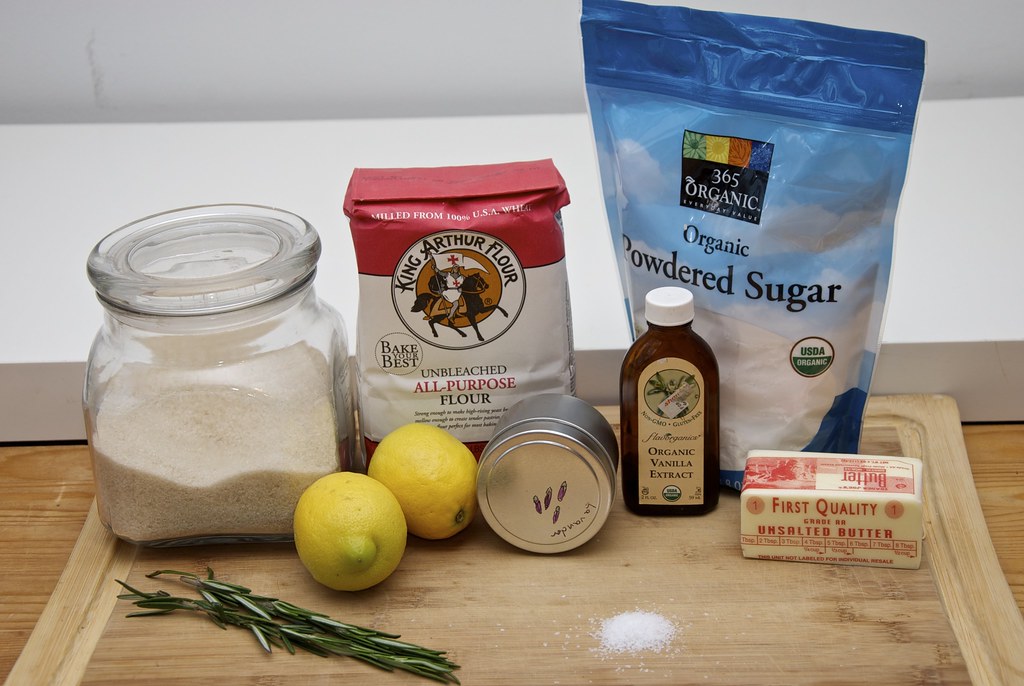
Here is the humble list of the ingredients:
- 1/2 cup of butter
- 1/4 cup of sugar
- 1 1/2 cups of flour
- 1 tsp of vanilla extract
- a pinch of salt
- 2 tbsp of dry lavender flowers
- 2 lemons
- 1 sprig of rosemary
And because no serious cookie is complete without icing:
- juice of a lemon
- 1 cup confectioners sugar
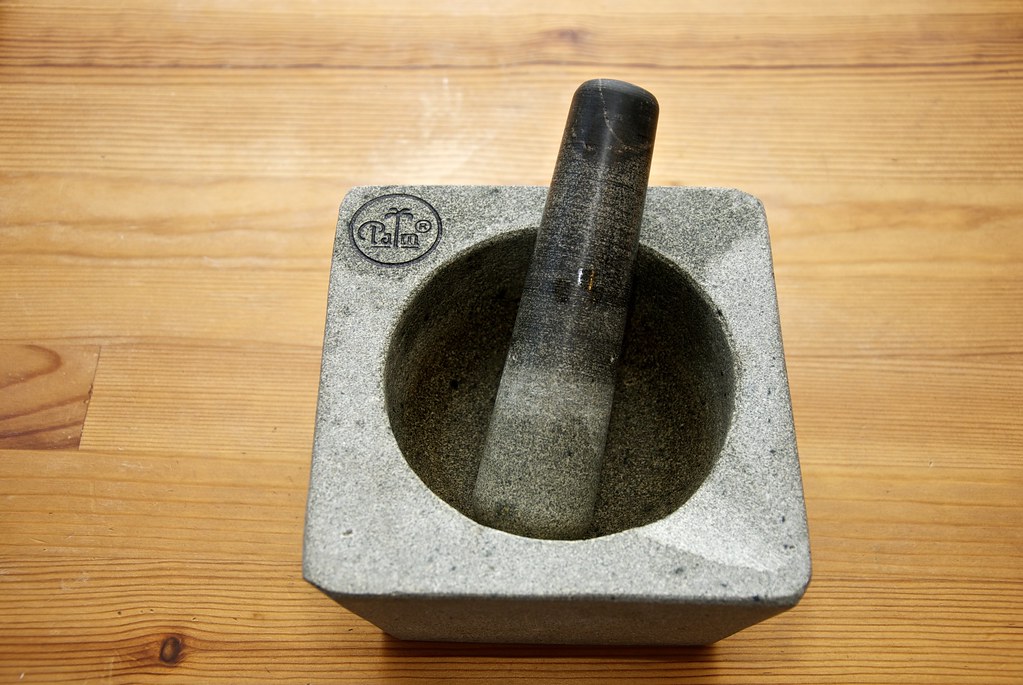
Start with a mortar and pestle.

Add half of the sugar in there.

Follow that with a few leaves of rosemary. Not too much though. Rosemary can easily overpower everything. We just need a few of the basic floral undertones.
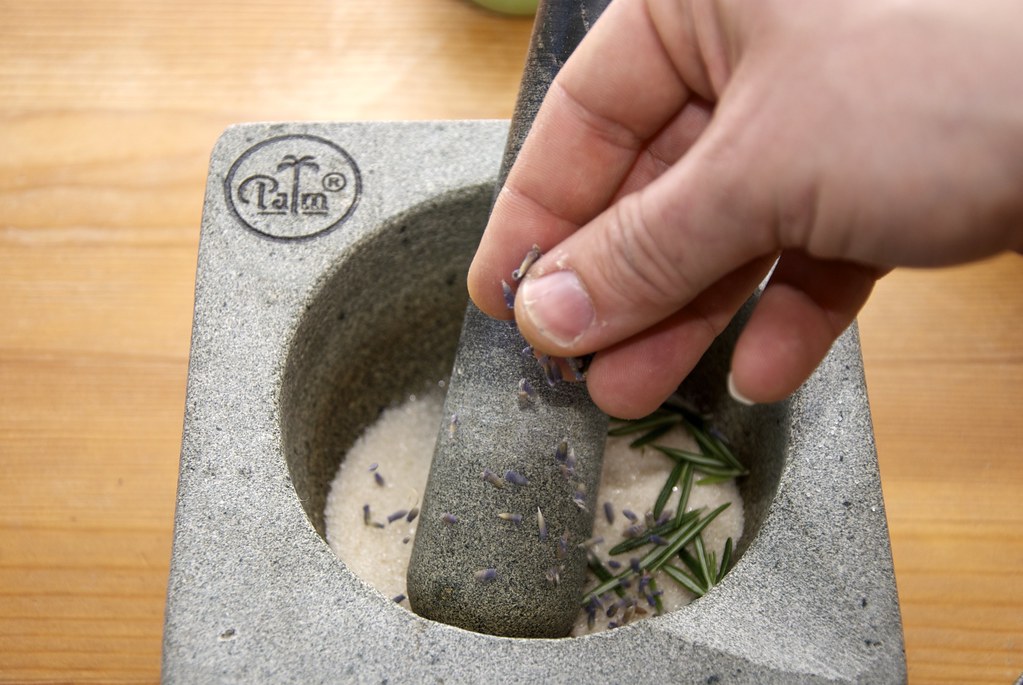
Then add 1 tsp of lavender and grind away. Grind until you get a slightly purpley sugar. I am sure that I had a picture of the grinding process, but my camera has a different opinion.
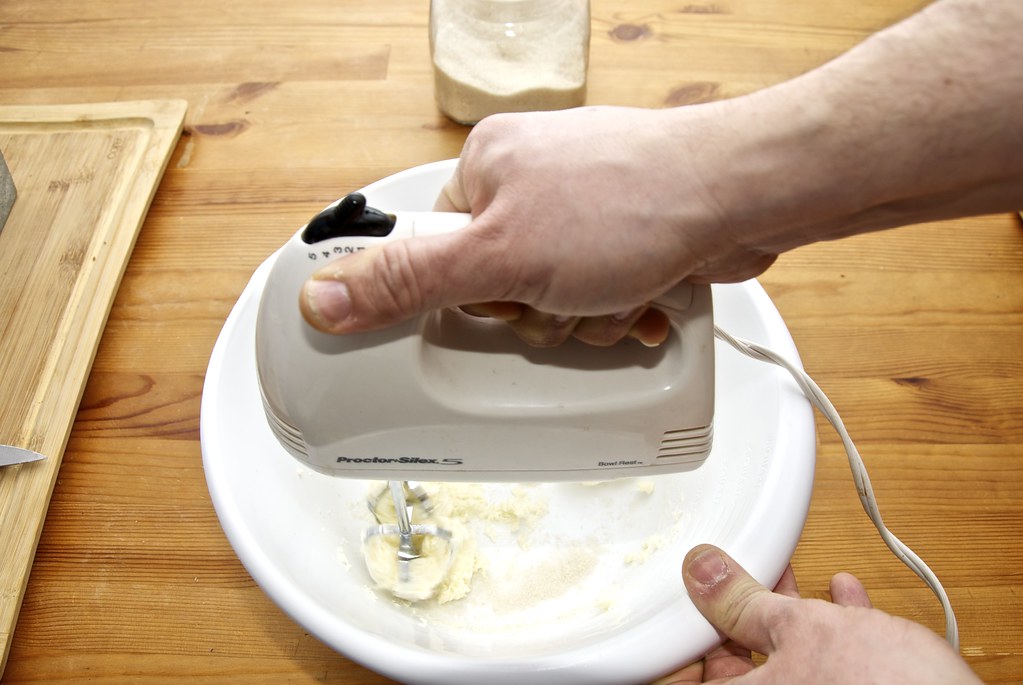
Next add the rest of the sugar with the butter and start beating it together.

Then with the help of a sifter add the flavored sugar.

Toss all the leftover woody parts of the rosemary and the lavender. If you cannot grind them what makes you believe you can eat them?
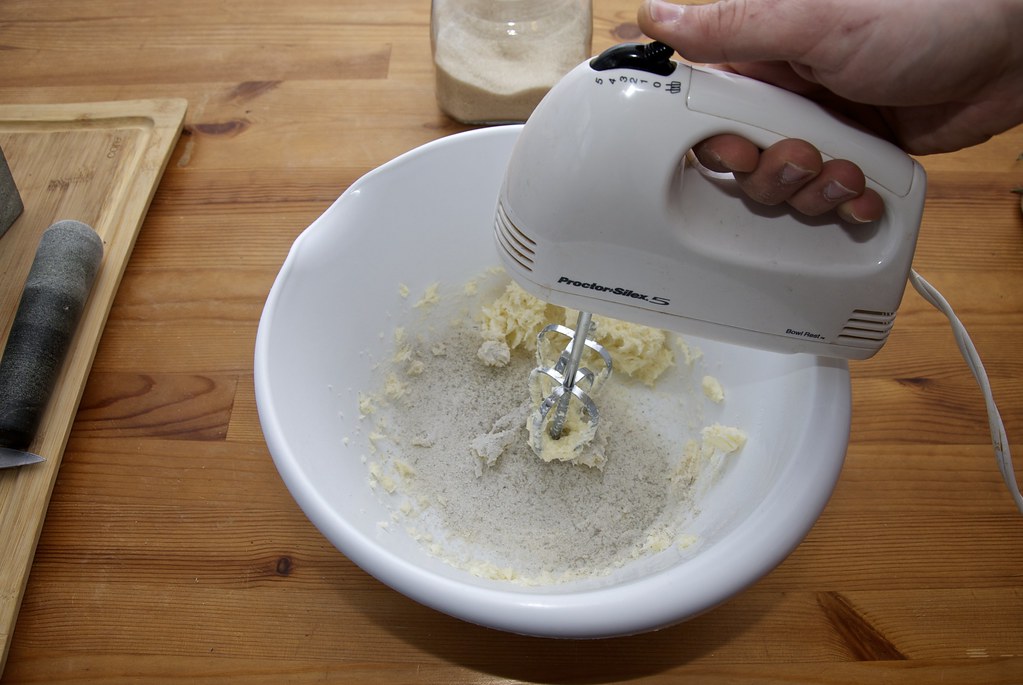
Continue creaming the sugar and the butter till the butter lightens up in color and becomes slightly white.
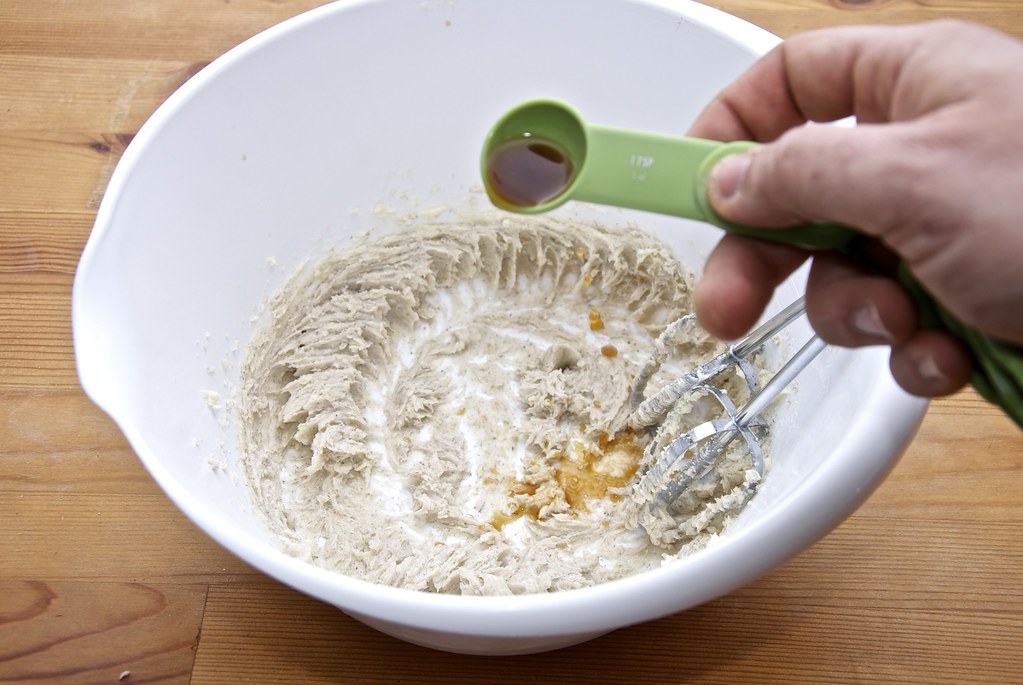
Follow that with the vanilla extract.
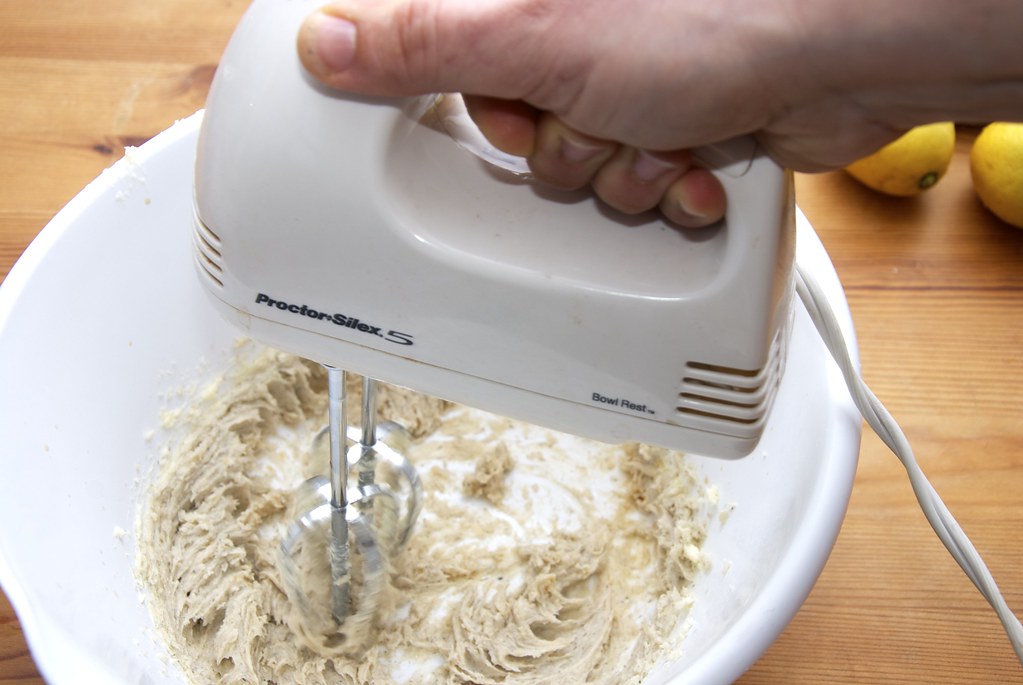
Blend it together.

Take the lemons and your favorite zester and remove all the zest. The trick when you work with microplane graters is to move the grater and rotate the lemon. It kinda resembles playing the violin.
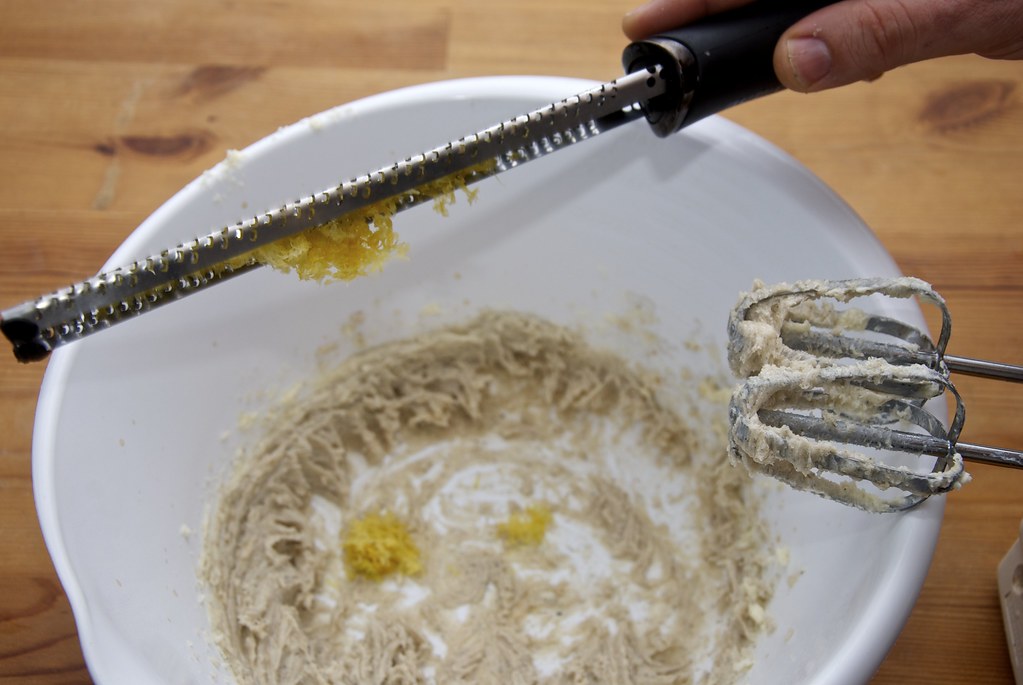
Add the zest of both lemons in the butter mixture.

Add also some whole lavender flowers for color.
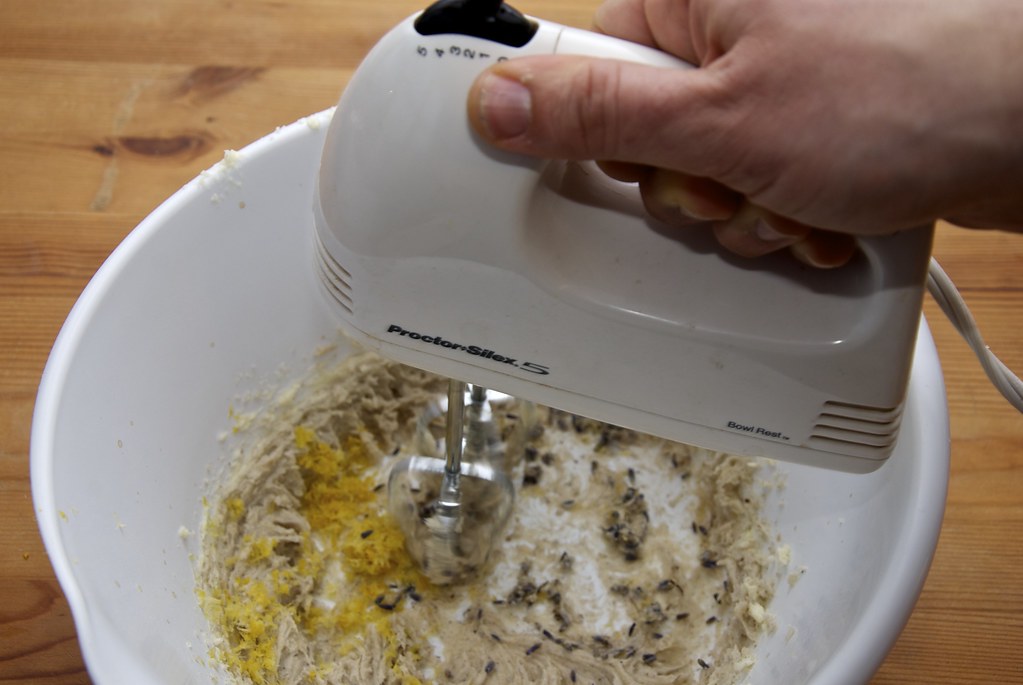
Blend away.
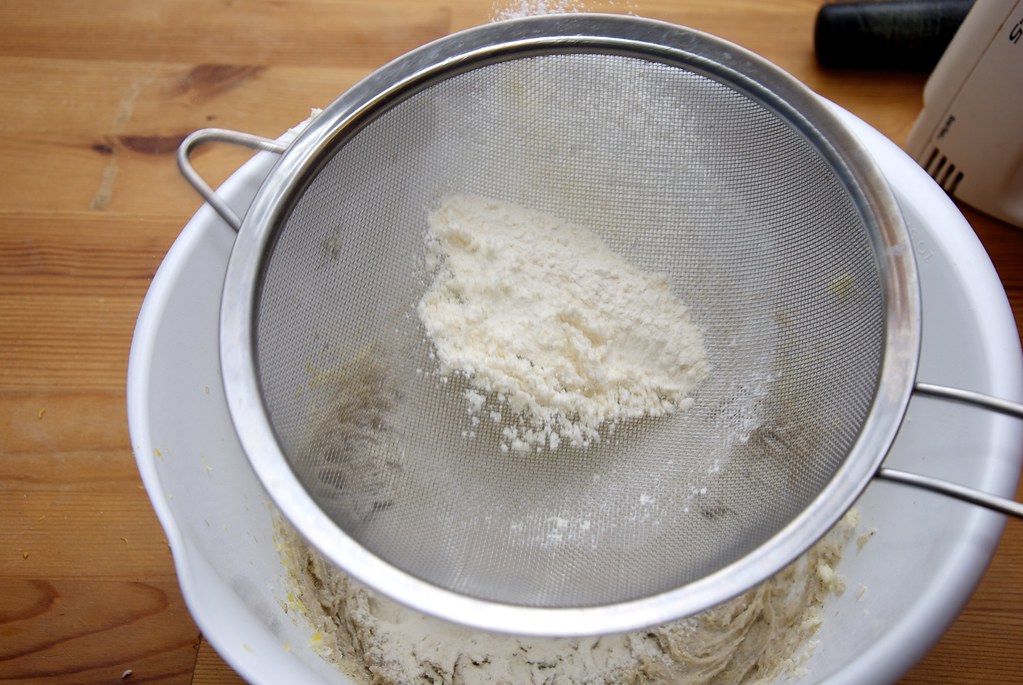
The last ingredients are the salt and the flour. As always use a sifter to fluff them up before they get in the mix.

Mix well. The result will resemble rice. Just like making a pie crust.
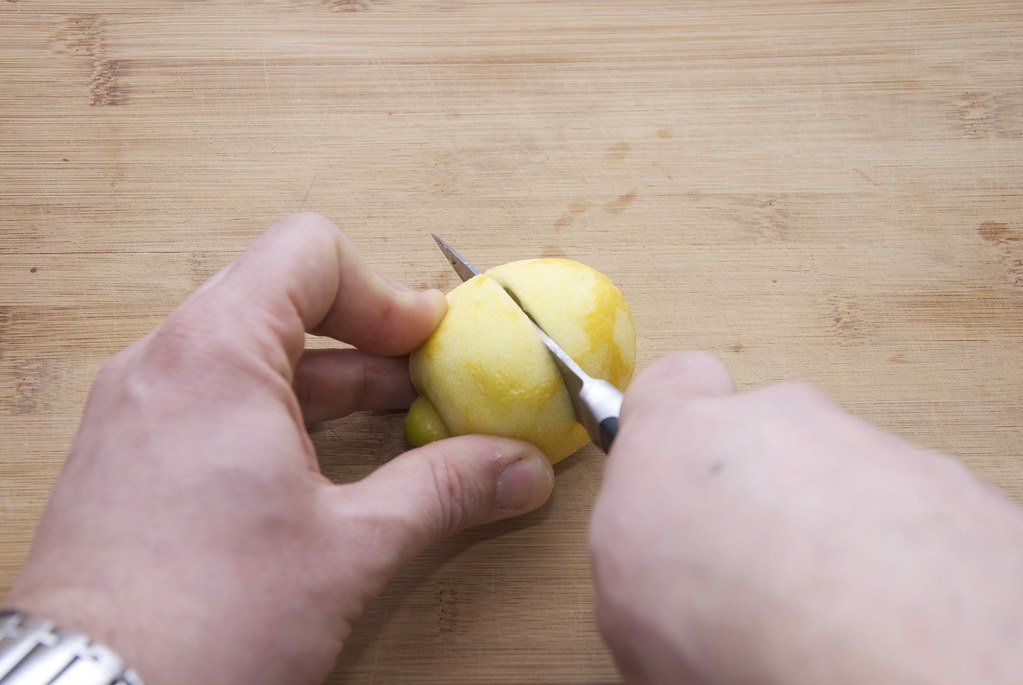
Cut both lemons in half.
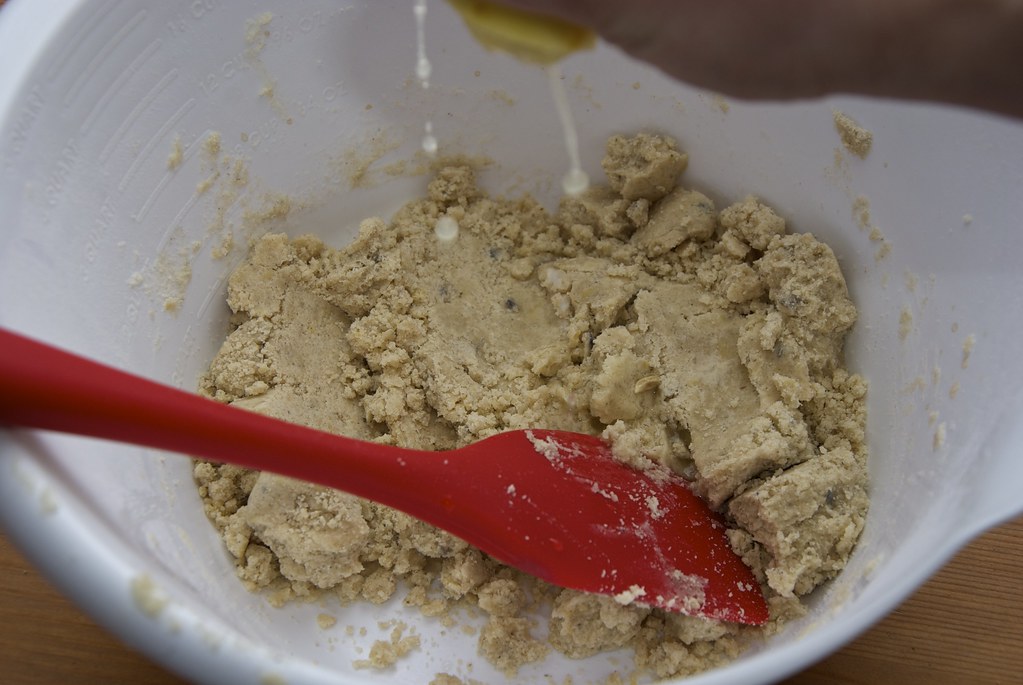
The juice of one lemon goes into the dough. Once you mix the dough cover it in a plastic wrap and store in the freezer for a minimum of 30 minutes. This will allow the butter to firm up, and also will allow the flour to fully hydrate and come together. A big mistake occurring very often is not giving enough time to the dough to reach its full potential and become workable.
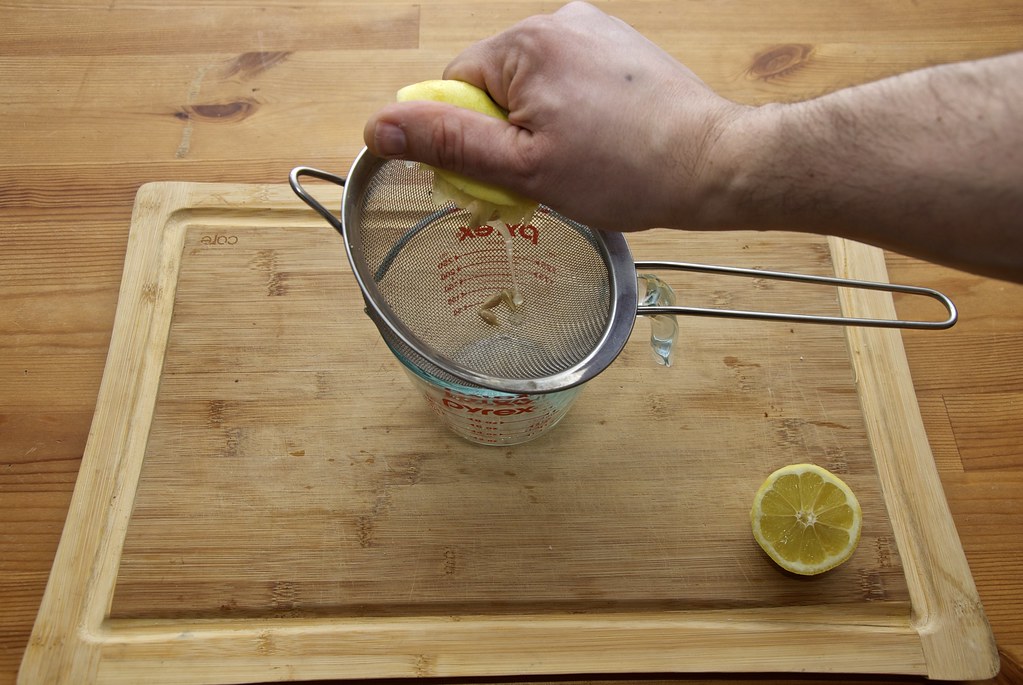
While this is happening let’s focus on the icing. Strain the juice through a strainer. It should give about 4 tbsp of juice. If you get less no worries. Use less sugar.
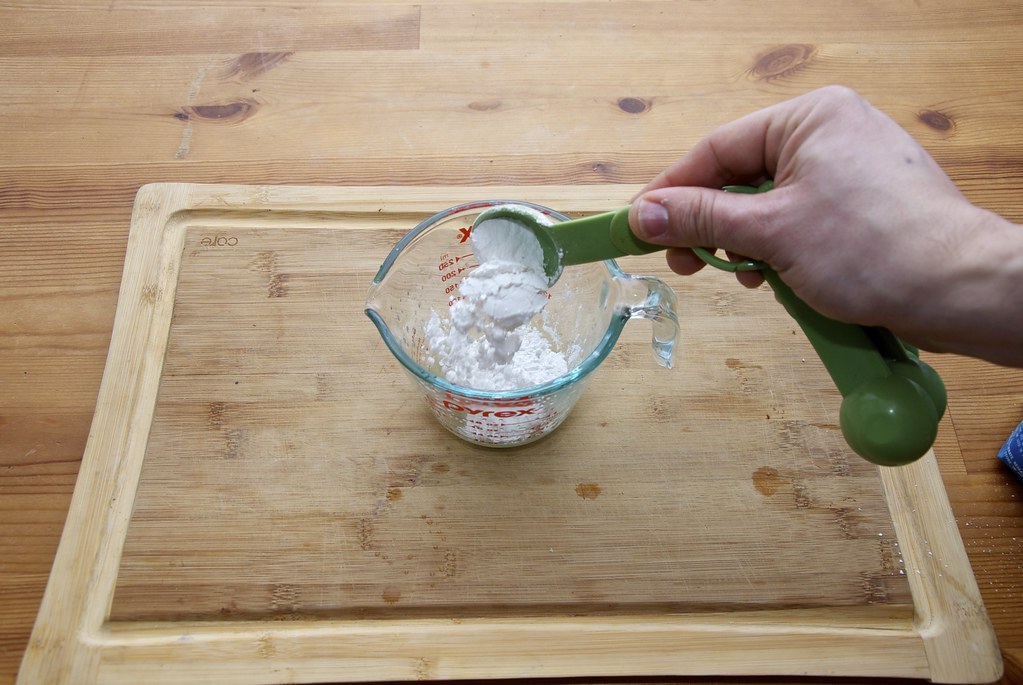
Add the powder sugar.

Mix with a fork until it becomes smooth. If it is too thick add some more lemon. If it is too loose add more sugar.

Get it until it is in the ribbon stage. When you pull out the fork and drips it makes strikes that stay on the surface for a couple of seconds.
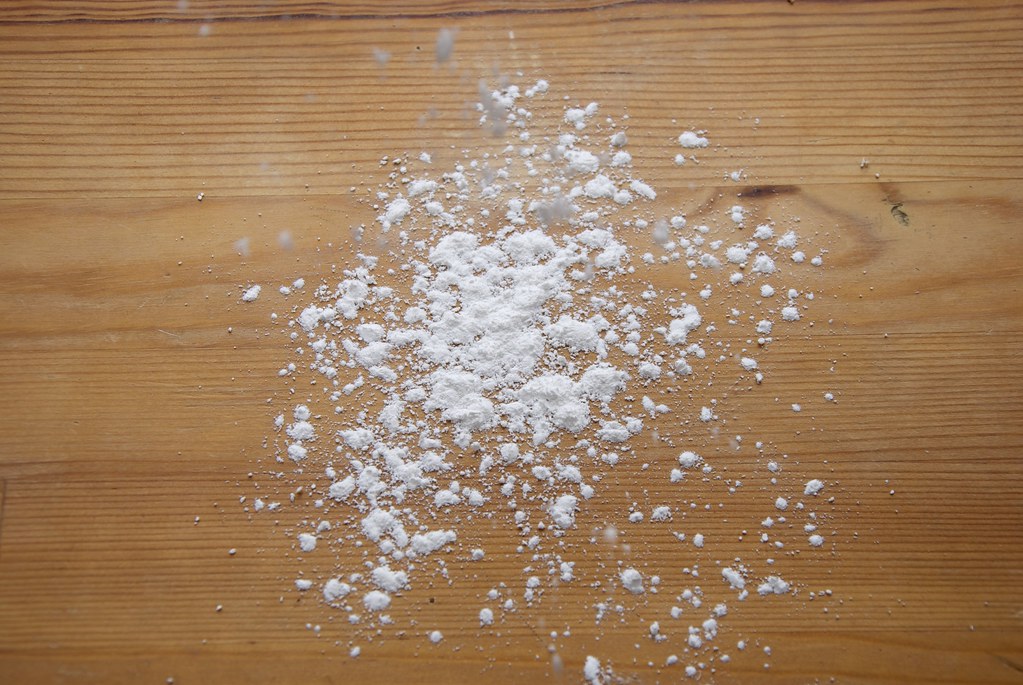
Once the dough is relaxed spread some poser sugar on the table. Flour can be used too, but it can make the dough tougher.
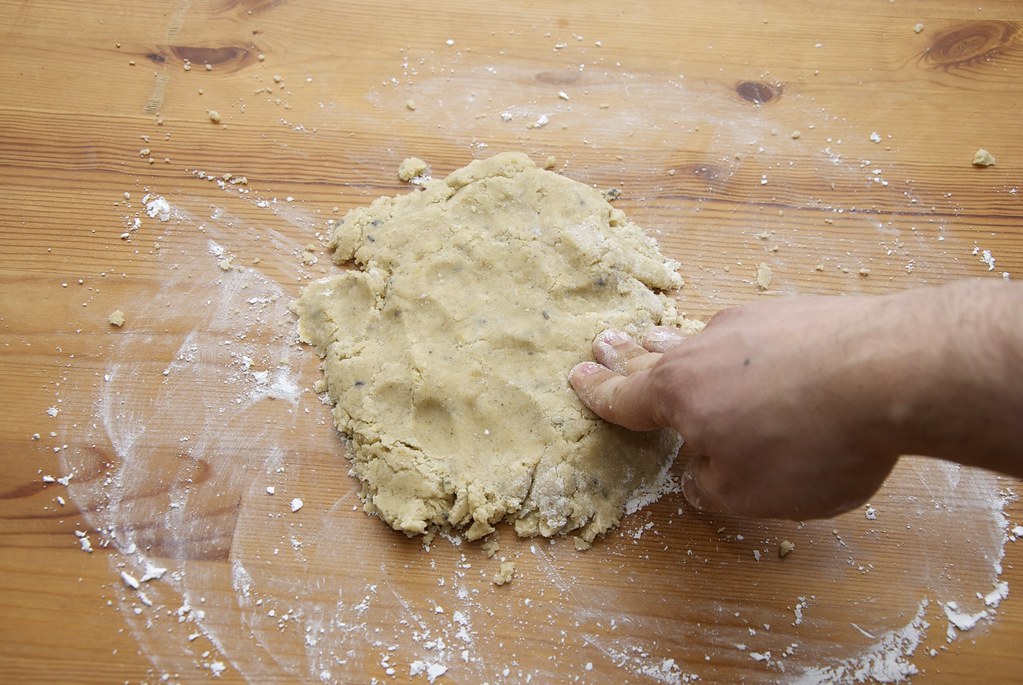
Place the dough on the dusted surface and with your fingers spread it to flatten it. We need to open it to a 1/4 inch thickness. This is not easy. Not only to get to the exact 1/4 inch thickness, but more challenging is to get a uniform thickness. But after years of research I cracked the code. I used a 1/4 inch wooden dowels from the hardware store. They are 3 ft long, 1/4 inch thick and made from non treated wood making them food-safe. Also they are only $2 per dowel. Can’t beat that.
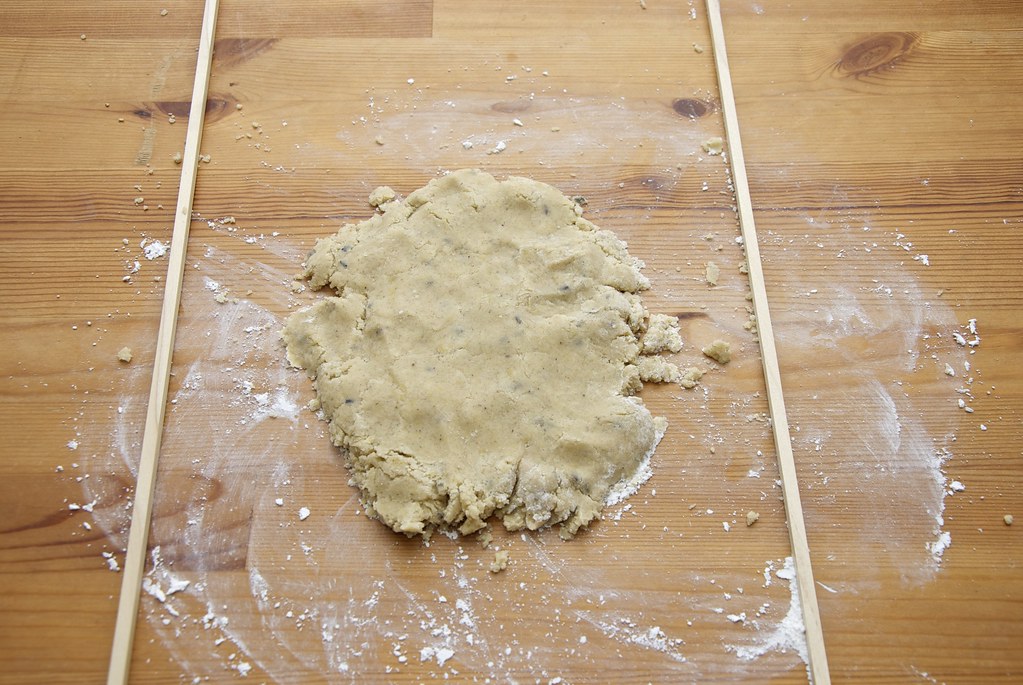
Place the dough in-between the tow dowels.

Take your rolling pin and flatten the dough. No need to worry about thickness and uniformity. This is all taken care off.
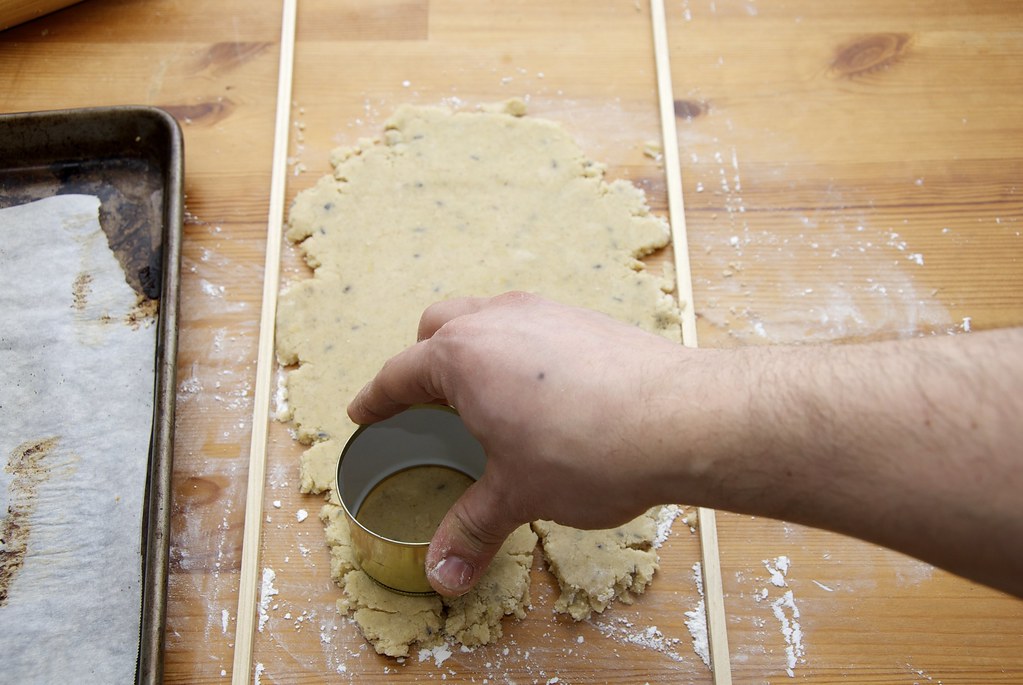
Using your cookie cutter cut as many cookies as you can. And yes. This is not a cookie cutter. It is an old can that I cut out both sides.

This was the maximum number of cookies. Transfer them to the pan. Gather up the scraps and reroll the dough the same way as before.
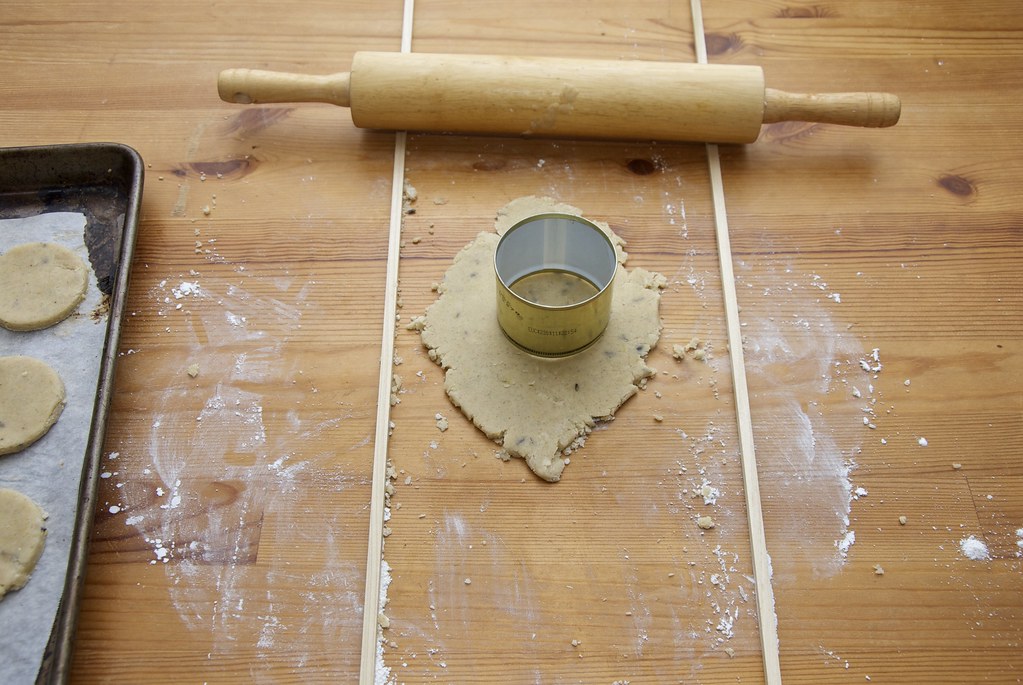
Cut more cookies and repeat.
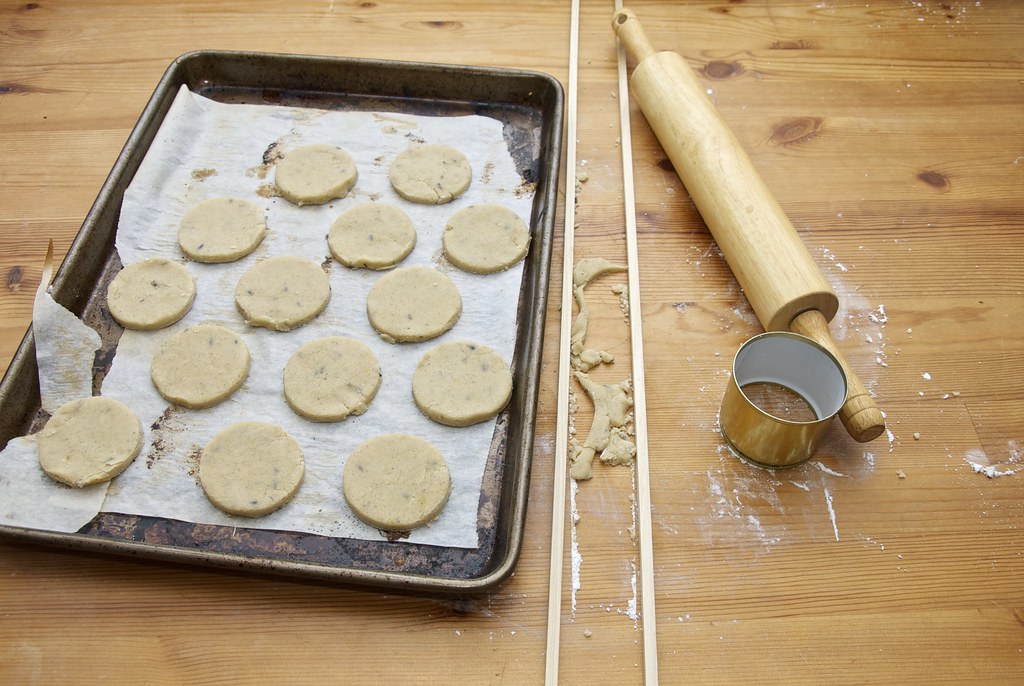
This is all the cookies (14-15 in total). By the way my pan is not dirty, it is used. It has been in ovens. It has been places. Transfer them in an oven that is set at 400F. Bake for about 10 minutes. Don’t wait for them to get color. Just crisp up.

Like this!
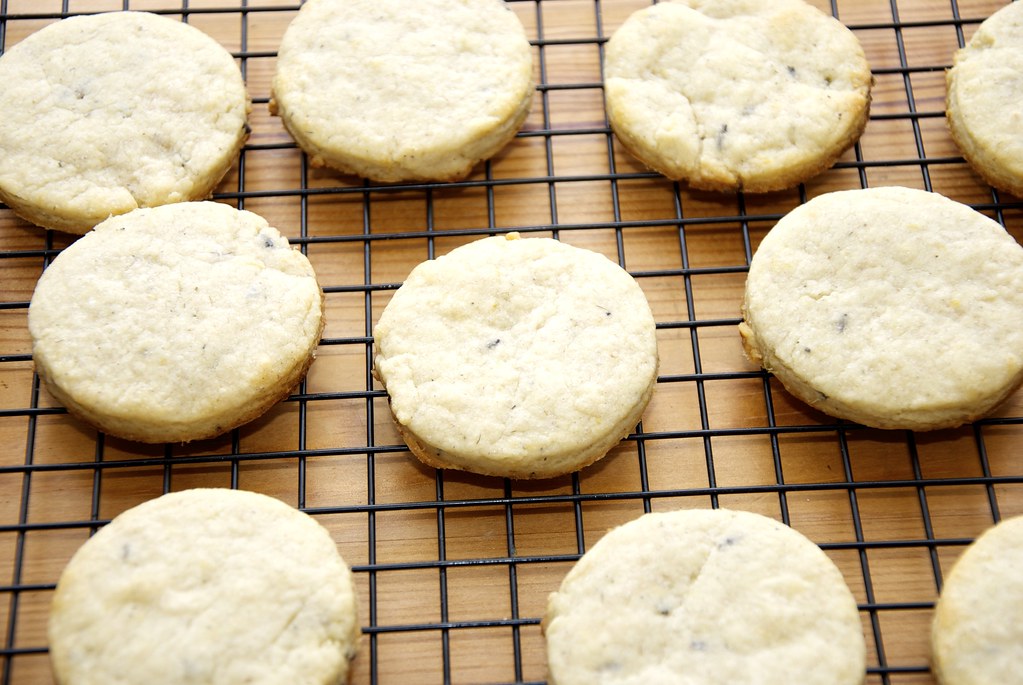
Let them on a rack to cool for 20-30 mins. If you ice them warm the icing will just run off.
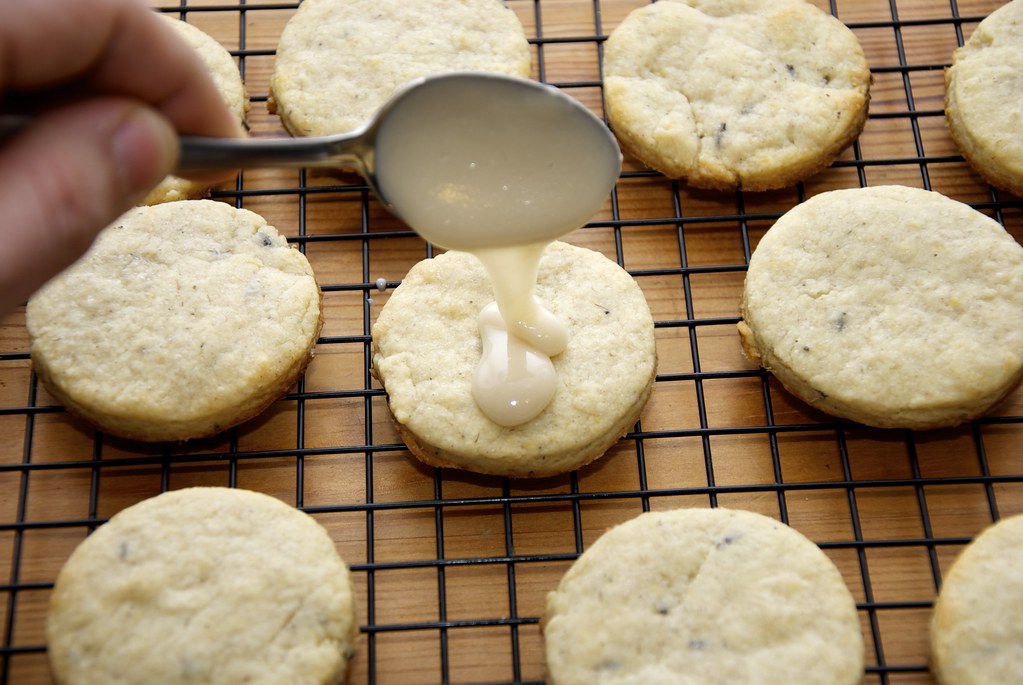
Once cool drop a teaspoon of icing on top. If it is too thick just pop it in the microwave for 5 seconds.
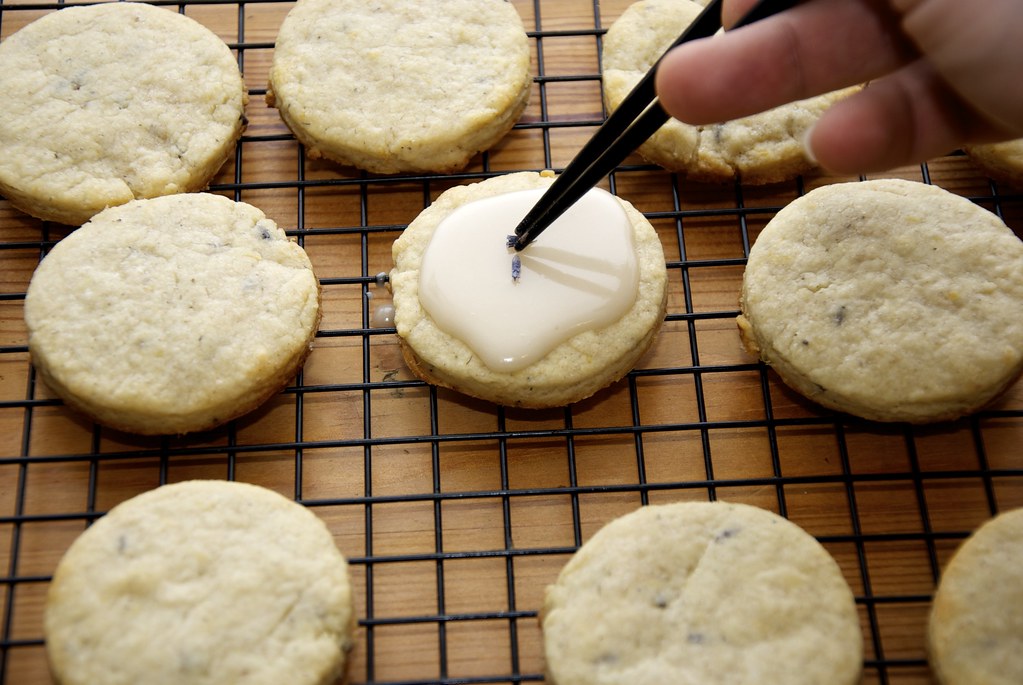
Then with the use of a chopsticks or tweezers place some of the lavender flowers on the fresh icing.
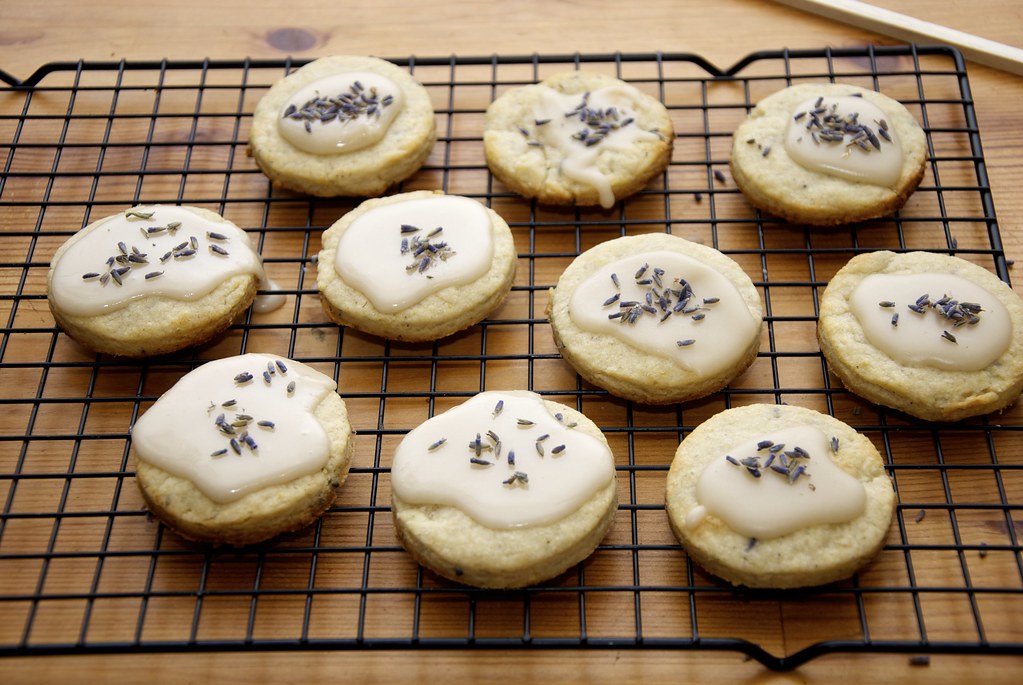
Let the icing cool. On these cookies the icing is not uniformly spread. However, I liked that since it gives them a great rustic look.

Serve and wait…

wait for the compliments of the adoring crowd.
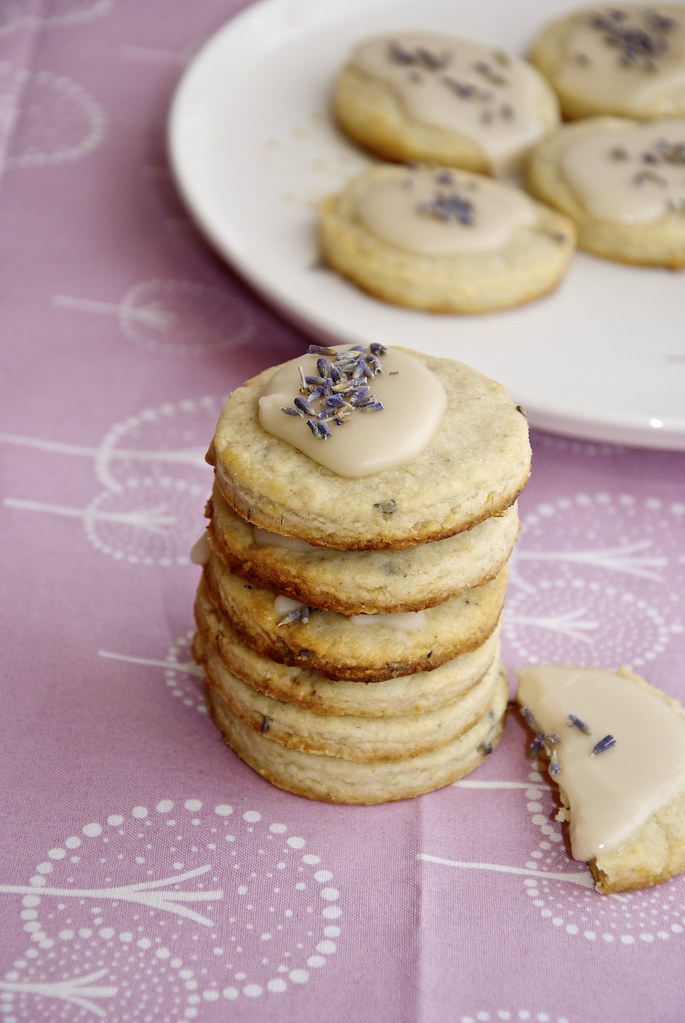
Amazing and easy cookies. Can’t beat this recipe!
Print
Lavender Rosemary Lemon cookies
-
 Prep Time: 60 mins
Prep Time: 60 mins -
 Cook Time: 15 mins
Cook Time: 15 mins -
 Total Time: 75 mins
Total Time: 75 mins -
 Yield: 15 cookies
Yield: 15 cookies -
 Category: Cookies
Category: Cookies -
 Method: Baking
Method: Baking -
 Cuisine: American
Cuisine: American
Description
A great cookie recipe that reminds of spring! Perfect with a warm cup of tea.
Ingredients
Cookies:
-
1/2 cup of butter
-
1/4 cup of sugar
-
1 1/2 cups of flour
-
1 tsp of vanilla extract
-
a pinch of salt
-
2 tbsp of dry lavender flowers
-
2 lemons
-
1 sprig of rosemary
Icing:
-
juice of a lemon
-
1 cup confectioners sugar
Instructions
- In a mortar and pestle grind half of the sugar, the 1 tbsp of the lavender flowers and a tsp of rosemary leaves.
- In a bowl cream together the butter and the rest of the sugar.
- Add the sugar with the herbs with the help of a sifter to hold back the large chunks.
- Add the vanilla extract and the lemon zest and blend.
- Add the flour and bring the dough together.
- Add the juice of one lemon and blend again.
- Let the dough in the fridge for a minimum of 30 mins.
- The meantime, make the icing by mixing the juice of the other lemon and the powder sugar.
- Bake the cookies for 10 minutes.
- Let them cool completely.
- Decorate with the icing and some more lavender flowers.
Notes
- You can make them in all sorts of shapes, but I prefer the round cookies because you are not getting any burned edges.
- You can use this as a base recipe and add all kinds of herbs and flavorings, like thyme and sage.
Nutrition
- Serving Size: 1 cookie
- Calories: 137 kcal
- Sugar: 8.9 g
- Sodium: 205 mg
- Fat: 6.3 g
- Saturated Fat: 3.9 g
- Unsaturated Fat: 2.2 g
- Trans Fat: 0.2 g
- Carbohydrates: 19.1 g
- Fiber: 0.4 g
- Protein: 1.4 g
- Cholesterol: 16 mg
Keywords: cookies, icing, herb cookie, rosemary lemon cookies


